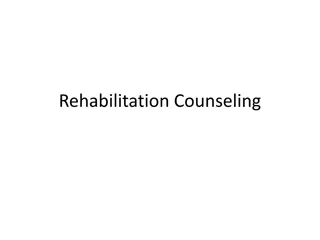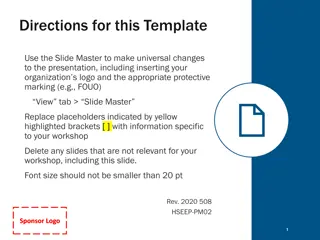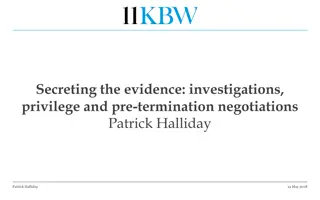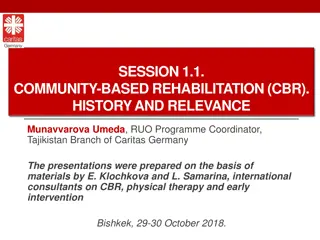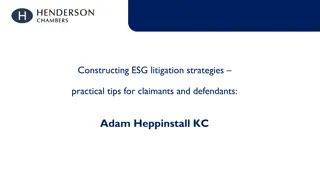Comprehensive Guide to Case Rehabilitation and Litigation Preparedness
Learn how to rehabilitate a weak case by identifying gaps, involving key individuals, and planning strategically. Prepare effectively for depositions and trial by reviewing case files, documents, and evidence. Discover essential tips for presenting your case confidently and handling the litigation process with expertise.
Download Presentation

Please find below an Image/Link to download the presentation.
The content on the website is provided AS IS for your information and personal use only. It may not be sold, licensed, or shared on other websites without obtaining consent from the author. Download presentation by click this link. If you encounter any issues during the download, it is possible that the publisher has removed the file from their server.
E N D
Presentation Transcript
Depositions and Trial
Objective Describe how to rehabilitate a weak case, what to expect and how to prep for the litigation process, and how to present your case
Rehabilitating a Case Start from Square One Identify the Gaps Determine how or if the gaps impact the case Determine what needs to be accomplished to fill the gaps that will negatively impact the case Assign the appropriate individual to address the issue Be Honest Incorporate your attorney in the process Are the gaps fatal from a litigation perspective Bring your supervisor and executive staff on board Follow your attorney and executive directions
Rehabilitating a Case Do Not Focus on Fault If necessary, develop the entire case anew If new experts or testing is required, consider other expert sources Allow the previous investigator to learn from the issues Plan for having to explain any different findings during testimony which is correct an why
Preparation For Depositions Know your employment and work history do not exaggerate your training or investigative experience Review all case files, notes, documents, and evidence prior to testimony Prepare necessary copies of documents, photos, and other items that you will use for your Deposition have a complete set for you and your counsel, opposing counsel, and the court reporter Dress appropriately - If in uniform, make sure everything is clean straight and properly displayed Plan on being early at least 30 minutes ahead of your schedule appearance
Preparation For Trial: Review all case files, notes, documents, and evidence prior to testimony Review transcripts of previous deposition and/or court testimony to ensure consistency that would include previous similar cases they will probably know what you said for a previous similar situation Know the documents that you produced and what they indicate be careful because they will try to take your statements out-of-context
Preparation For Trial: Dress appropriately. If in uniform, make sure everything is clean straight and properly displayed Plan on being early at least 30 minutes ahead of your schedule appearance
Knowledge Check Once a case has been found to be weak, you must: A. Drop the case and get on to the next one B. Admonish the original case investigator and provide oversight on any future cases that are assigned to them C. Conduct a complete analysis of the case to indentify gaps and corrective actions needed D. Turn it over to legal counsel and let them determine what to do
Knowledge Check The best way to handle deposition or courtroom testimony is: A. Settle the case prior to having to engage in such activities B. Properly prepare, relax, and act professionally C. Smile and only answer yes or no questions D. Look at your attorney prior to answering questions





